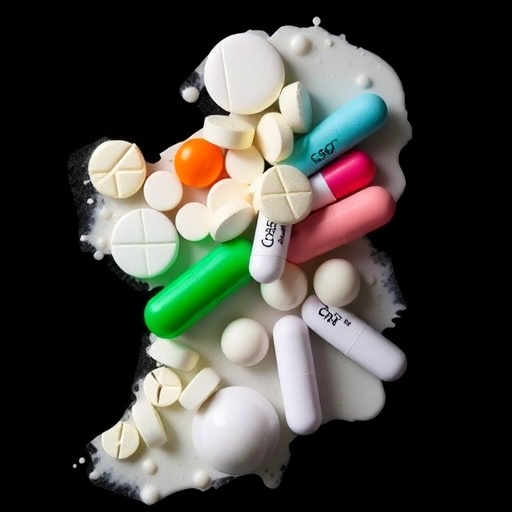
In recent years, the medical field has experienced a significant shift toward the use of generic medications, especially in countries like Ireland. Generic drugs are chemically identical to their branded counterparts and are manufactured following a patent expiration. This transition to generics not only enhances patient access to medications but also provides substantial economic benefits. Understanding the differences and similarities between generic drugs and their originator counterparts allows patients, healthcare professionals, and policymakers to make informed choices regarding medication options.
At the core of the debate about generic versus branded drugs lies the issue of chemical composition. Both generic drugs and their brand-name equivalents contain the same active ingredients, which means they are pharmacologically identical. Generics undergo rigorous testing to demonstrate that they are bioequivalent to their originators—meaning they work the same way and reach the same levels in the bloodstream within a similar timeframe. This crucial aspect ensures that patients can expect similar therapeutic effects from generic medications as they would from their branded counterparts.
Another essential aspect to consider is the manufacturing process. While the active ingredients must be identical, the excipients—the inactive components that make up the drug’s formulation—can differ in generics. This variation can influence how the medication is absorbed and metabolized but typically does not affect the overall therapeutic efficacy. Regulatory agencies, such as the Health Products Regulatory Authority (HPRA) in Ireland, closely monitor the production of generics to ensure they meet strict quality standards, providing an additional layer of assurance for consumers.
From a patient perspective, the affordability of generic drugs represents a compelling advantage. The cost of branded medications can be prohibitively expensive, especially for patients requiring long-term treatment for chronic conditions. Generics offer a more accessible option, as they are typically priced 30% to 80% lower than their brand-name counterparts. This price difference is largely attributed to the absence of the research and development costs that original manufacturers incur during the drug discovery and patenting processes. Consequently, the shift to generics may not only alleviate individual financial burdens but can also help reduce overall healthcare costs.
Ireland serves as a remarkable case study in the adoption of generic medications. The Irish healthcare system has embraced the use of generics, driven by government policies that encourage their use to cut costs. The introduction of the generic substitution policy in Ireland incentivizes pharmacies to dispense generics instead of branded drugs when available, further promoting economic efficiency within the healthcare system. These measures have resulted in a significant increase in generic drug prescriptions, demonstrating a successful shift in public and professional attitudes toward these alternative treatments.
However, while the economic benefits of generics are evident, certain perceptions and misconceptions still exist in the minds of the public. Some individuals associate generics with lower quality, driven by concerns related to efficacy and safety. Addressing these misconceptions through public education campaigns is essential to boosting confidence in generics. Healthcare providers can play a pivotal role in this process by discussing the effectiveness of generics during patient consultations, sharing test results that reinforce their equivalency to branded drugs.
Pharmaceutical companies must also navigate a complex landscape when it comes to marketing generic medications. While cost-saving is an essential factor, consumer awareness and perception about efficacy remain paramount. Transparent communication regarding the regulatory oversight and stringent standards governing the production of generics can help in building trust among patients. Understanding that the same regulatory scrutiny applies to generics ensures that patients can feel confident in the medications they receive.
Another significant advantage of generic drugs is the competitive market they create, which can lead to price reductions across the board. As more generics enter the market, original manufacturers often lower their prices to remain competitive. This situation cultivates a cycle of price competition that ultimately benefits consumers. The greater availability and acceptance of generics also foster innovation in the pharmaceutical industry, as companies are motivated to develop new and improved therapies.
Potential economic impacts extend beyond individual healthcare savings. When a country adopts and embraces the use of generics, it can experience broader economic benefits, including reduced healthcare expenditures and improved population health outcomes. The resultant savings could, in theory, be redirected toward other pressing health concerns or public initiatives, illustrating a broader economic impact beyond immediate cost benefits.
Nevertheless, challenges remain in ensuring that generic drugs gain the widespread acceptance they deserve. For healthcare professionals, staying informed about the rapidly evolving generic market is essential. Continuous education on the pharmacokinetics, safety profiles, and therapeutic equivalence of generics enables healthcare providers to make sound prescribing decisions. Further, as healthcare systems transition to value-based care, embracing generics could align with cost-containment strategies, empowering better resource allocation.
The environmental consideration of producing generic drugs, while not as widely discussed, is another critical factor. Generic manufacturers often build upon the existing knowledge and frameworks established by originator companies, potentially leading to a more efficient production process. This efficiency can translate to reduced waste and lower carbon footprints, contributing to the overarching goals of sustainability in the industry.
Outside Ireland, the global landscape for generics reveals rising trends in various healthcare systems adopting similar policies. Countries worldwide observe the economic impact that generics have, propelling them to reevaluate their own practices. The World Health Organization actively encourages the use of generics and biosimilars to improve access to essential medications worldwide. Thus, Ireland stands at the forefront of a movement that may inspire other nations to reevaluate their healthcare frameworks to prioritize generics.
In conclusion, the comparison between generic drugs and their branded counterparts highlights critical similarities and differences that can significantly impact prescribing practices, patient access, and overall healthcare costs. As Ireland exemplifies, embracing generic medications can lead to substantial economic benefits and improved patient outcomes. Addressing misconceptions, enhancing public education, and highlighting the benefits of generics are essential steps that will help ensure that patients receive safe, effective, and affordable medications. This journey toward a more equitable healthcare landscape exemplifies the essence of progress within the pharmaceutical industry and spans beyond borders, influencing a global movement towards the increased utilization of generic medications.
Subject of Research: Comparison of generic drugs and originator drugs in Ireland.
Article Title: The Rise of Generic Medications: Economic and Health Benefits in Ireland
Article References:
Image Credits: AI Generated
DOI:
Keywords: Generic Drugs, Branded Medications, Ireland, Pharmaceutical Industry, Healthcare Costs, Economic Benefits, Patient Access, Bioequivalence, Public Perception, Regulatory Oversight.
Tags: bioequivalence in pharmaceuticalschemical composition of medicationsdifferences between generics and brand-name drugseconomic benefits of generic drugsgeneric medications in Irelandhealthcare professionals and medication choicesimpact of generics on drug pricinginformed choices in healthcaremanufacturing processes of drugsoriginator drugs vs generic drugspatient access to medicationspharmaceutical industry trends




